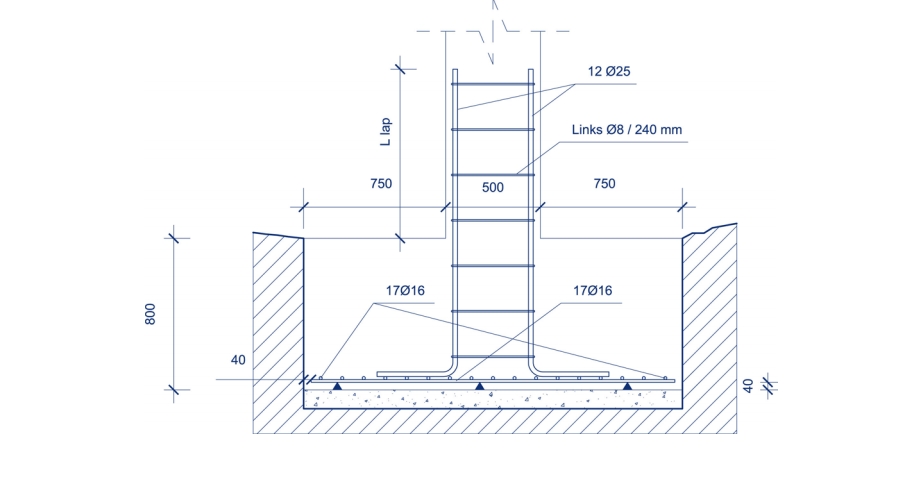If you take a look around you, you will realise that most structures (buildings, bridges, retaining walls, etc.) around you are made from concrete. It is true that concrete is one of the world’s most common building materials as the editors of Britannica Encyclopaedia put it. Say bridges, dams, buildings, skyscrapers, roads, monuments and the likes, all either entirely concrete structure or partly concrete structures.
If you have seen concrete structures being erected, you must have realised that the builders/engineers embed steel bars inside the concrete. Why is so? The following reasoning is an explanation of why structural concrete is usually reinforced.
Mass concrete/poured concrete or basically the normal concrete without reinforcing bars are excellent in taking compressional forces but fails whenever forces creating tensional forces are imposed/subjected to them. Given the fact that steel performs excellently when subjected to tensional forces, concrete is, therefore, strengthened using steel reinforcing bars (most commonly referred to as rebar) to make it withstand loads that generate both tensional and compressional forces.

Structural steel is used to reinforce concrete when erecting multi-storey structures (especially the load-bearing elements) beams, columns, slabs, retaining walls, shear walls, among other structural elements. The structural steel reinforcement can either be twisted or deformed to form ribs in order to make it bond well with concrete when poured in a mould. Formwork or shuttering is usually used to contain wet concrete when beams, columns, walls and slabs are being constructed.
Basically, what happens is that concrete and steel reinforcement bars act together in resisting forces by combining the compressional strength of concrete and the tensile strength of steel.
The following are the main advantages of reinforced concrete as cited by Raza Din:
- High compressive and tensile strength is achieved, therefore performing better when exposed to tensional and compressional forces.
- There is minimum deflection when reinforced concrete is subjected to flexural loads.
- The cost of maintaining reinforced concrete is lower compared to other building materials.
- Reinforced concrete is ideal for multi-storey structures compared to structural steel as it involved less labour to erect formwork, cut and bend the reinforcements then pour concrete to create a structure.
As a conclusion, it is important to note that steel reinforcement bars are usually sold in specific length and have various bar diameters. In the case where you are reinforcing a beam or a column and the length of the building element exceeds the length of one bar, the bars are overlapped to create a continuous one. The lapping of bars helps in the transfer of loads/forces from one bar to another making them act monolithically at the position of the bar discontinuity.
That’s all I have to share concerning the reason behind having concrete reinforced when erecting load-bearing structures. If you have any thoughts about this discussion please leave your comments in the below comments section. Let’s make construction knowledge available to all people regardless of their trades for free on the web together.
Join me on Patreon! https://t.co/RjNcQjo2C2
— QuantBuild Academy (@quantbuild_KE) July 27, 2020


0 Comments